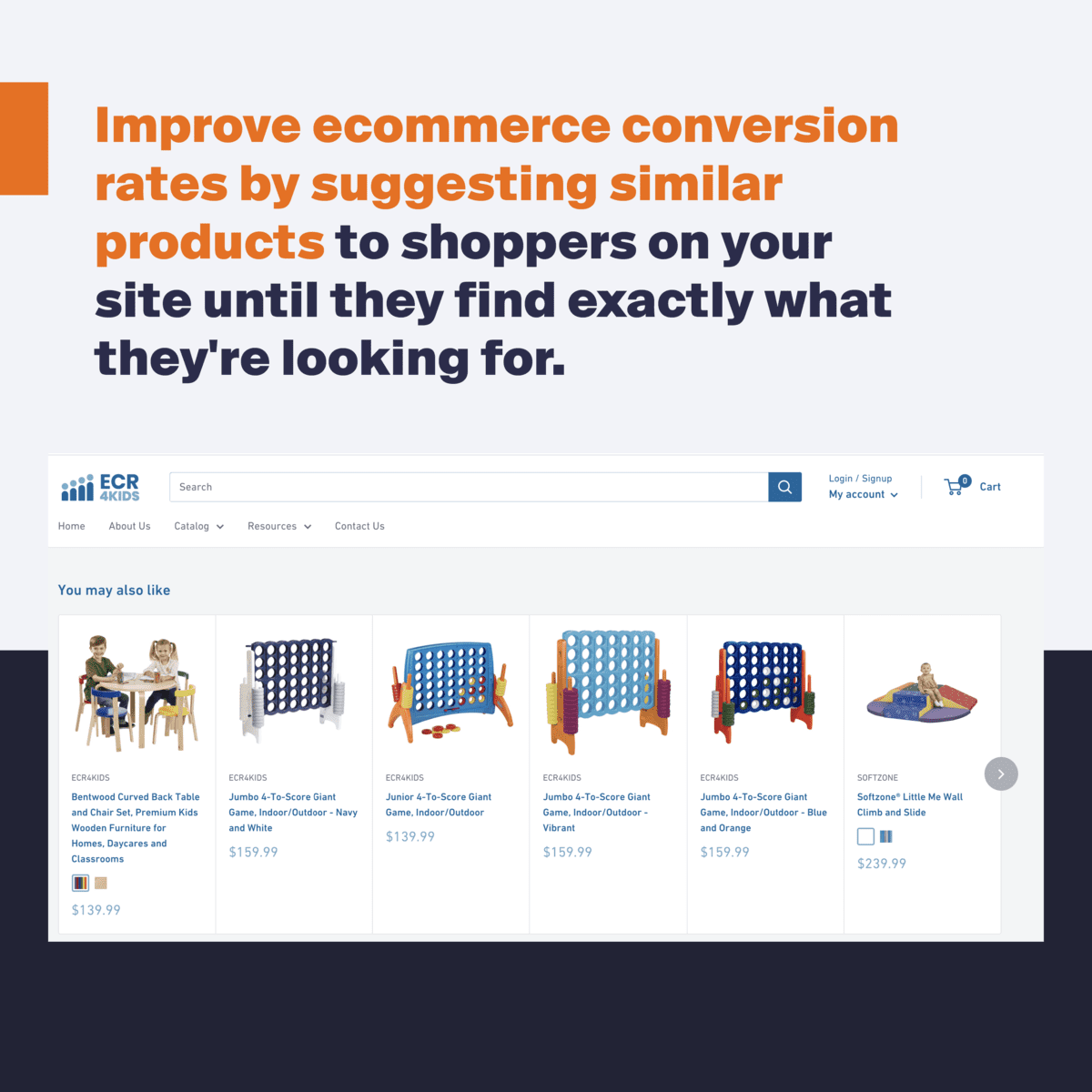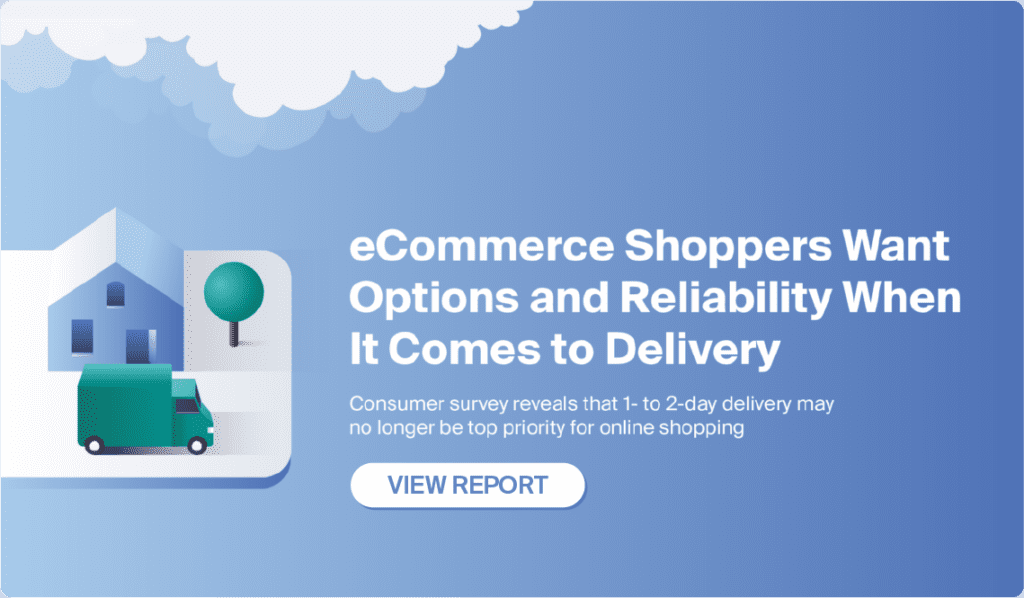Improving your eCommerce conversion rate is one of the quickest ways to improve ROI on marketing spend and increase your margins.
Every emerging eCommerce business wants to sell more online at scale. However, what’s not obvious is knowing if your eCommerce conversion rate is on par with industry standards.
So, how can you know if your eCommerce conversion rate needs to be improved?
First, take a look at your digital marketing efforts and website activity:
- How are your CPC ads converting?
- Where are you ranking in search inquiries for relevant keywords?
- Are you noticing that shoppers are abandoning their carts?
If web traffic and website activity is on the uptick but you’re not moving the needle on top-line revenue, then it may be time to look at how to improve conversions.
Keep reading to learn more about these 6 tips for increasing eCommerce conversion rates:
- Offer 2-Day Shipping
- Offer Free Shipping
- Optimize Content
- Customize the Shopping Experience
- Optimize the Checkout Process
- Understand How Customers Are Shopping Online in 2023
What Is a “Good” Conversion Rate for eCommerce Based on Industry Data?
Standard eCommerce conversion rates vary slightly by product category and geography, but the US average hovers around 1.6%. Typically, higher ticket items like furniture have a lower eCommerce conversion rate (sometimes as low as 0.4), as consumers tend to take more time researching and considering large purchases. Meanwhile, products like pet care often have conversion rates as high as 3.28%. So, keep in mind that standard conversion rates can vary by industry.

How to Measure eCommerce Conversion Rates
To calculate your conversion rate, simply divide the number of sales made within a specified time period by the number of pageviews during that same time period. For example: 30 sales in a day divided by 1,000 pageviews that day equals 0.03 (or 3%).

To understand which pages or marketing tactics are working best, you can segment your conversion rate by home page conversions, product page conversions, email conversions, and so on. Once you determine your highest converting pages, you can increase visibility of those pages, as well as examine them to find out what exactly is converting shoppers (is it compelling copy, splashy graphics, or a prominent “buy now” button) and recreate those elements on other pages.
No matter how your site measures up within your industry, these five simple tips for ecommerce conversion rate optimization can increase the ROI on your marketing dollars and improve your bottom line.
6 Tips for eCommerce Conversion Rate Optimization
1. Offer 2-Day Shipping
In a recent ecommerce business survey, 52% of brands who sell online reported that 2-day shipping was highly effective. This included influencing customer decisions at checkout and conversion rates as high as 25%. In fact, fast shippingguarantees have been shown to improve conversion rates at the top of the funnel as well. Google’s initial findings on the use of its Free & Fast Shipping annotations showed higher conversion rates on Google Shopping listings by up to 9%.
2. Offer Free Shipping
In the same survey, merchants revealed that shipping options offered at checkout sway more customer decisions than in-cart discounts or free gifts with purchase. A full 56% of merchants indicated that offering free shipping was a highly effective tool for improving ecommerce cart conversions. Meanwhile, offering free shipping may influence potential customers more so that 1- to 2-day shipping. A recent survey found that 70% of consumers may be willing to forego faster shipping if offered free shipping.
3. Optimize Content
Compelling and detailed product descriptions as well as high-quality and accurate photos not only improve ecommerce conversion rates but can also decrease return rates. Be sure to include photos of the product from as many angles as possible, and if budget allows, include interactive 360° photos or video of the product in action.
Another powerful content tool for ecommerce conversion rate optimization is customer reviews and user-generated content. An all-in-one marketing platform like Growave simplifies building and curating user-generated content like reviews and Instagram galleries and improves customer engagement with loyalty programs and wishlists.
4. Customize the Shopping Experience
Implement an app or tool on your ecommerce platform to populate “also viewed” or similar product offerings below the listing the customer is currently viewing. This type of customization keeps shoppers on your site until they find exactly what they’re looking for.
Children’s furniture and toy supplier ECR4Kids offers a wide variety of toys grouped by activity or learning objective. By clearly displaying products “you may also like” based on the user’s search history and the product they’re currently viewing, shoppers are more likely to convert rather than navigate away from their site after viewing one or two products.

5. Optimize the Checkout Process
Ultimately, the more clicks it takes to get through checkout, the more likely a shopper is to abandon their cart. In a survey by BigCommerce, shoppers indicated four checkout experiences that caused them to abandon their cart without making a purchase.
35% indicated that they didn’t want to create an account. Creating an account early in the checkout process is a tactic many merchants use to capture email addresses for remarketing and cart abandonment campaigns. You can still include an email field as the first step in checkout, but offer a “checkout as guest option” after the email address is entered. This way you capture both your valuable marketing information and the final sale.
27% of respondents said that the checkout process was too long or complicated. To streamline the checkout experience, remove all distractions on the page and have clear instructions. A progress bar at the top of the page also lets customers know how many steps are left in the checkout process. O2 Recovery’s checkout process clearly shows shoppers where they are in the checkout process and even offers an easy express payment option with the Shop Pay Shopify app.

24% abandoned their cart because they couldn’t see their full purchase price upfront. Be sure to include taxes and estimated shipping costs (if applicable) as early in the checkout process as possible.
18% of respondents said that they didn’t trust the site with their credit card information. Establish trust with shoppers by displaying images of the major credit cards you accept or the PayPal and Apple Pay logos to show that you use customer-trusted payment methods. You can also display a McAfee, Geotrust, or similar security badge to establish further trust and credibility.
6. Understand How Customers Are Shopping Online
In today’s eCommerce landscape, customers are turning to online marketplaces. These sites- which aggregate multiple sellers- are becoming “search engines” for eCommerce. Among them are long-time eCommerce sites and familiar big box stores, such as:
- Amazon
- Walmart Marketplace
- Target
- eBay
- Wayfair
- Etsy
- Overstock
One-third of online shoppers report doing half their online shopping on these or other ecommerce marketplaces. Of those, 89% report shopping on two or more different marketplaces.
So, what does that mean for growing brands?
We’re seeing a growing trend of selling in multiple marketplaces. To increase ecommerce conversion rates, it may be time to take an omnichannel approach and turning to online advertising in these marketplaces.
Closing the Loop with Marketing
Aside from on-page optimizations, it may also be time to take a look at your paid ad copy. If ad conversions are high but on-site conversions are low, you may either be targeting the wrong audiences or your ad copy might be misleading. A/B testing ad copy will help you fine-tune your paid ads to turn clicks into revenue, lowering your customer acquisition costs.
Was this article helpful? Find more of our ecommerce resources here, or sign up for our newsletter for new insights every month.




